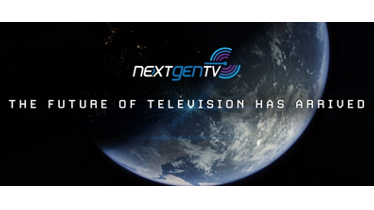Can NextGen TV Find Its Killer App?
To hit with consumers, ATSC 3.0 will likely need a unique experience

In mid-November 2020, I reported on a multimillion dollar NextGen TV promotional effort launched by Pearl TV and Phoenix Model Market partner broadcasters that proclaims “The Future of Television Has Arrived.”
The campaign consisted of one 30-second and two 15-second promos for stations to run on air, a consumer website with helpful NextGen TV information, like where to buy sets and where to tune in, and resources for broadcasters to use on their own websites to inform the public about NextGen TV.
While Pearl TV and the Phoenix partners should be commended for this effort, there’s a nagging question in my mind—and perhaps the minds of others in the TV industry. Is this enough?
Granted, this is wholly unscientific, but anecdotes from industry friends relayed to me indicate the answer is “probably not.” One in particular recounted a recent interaction with a Best Buy salesperson who was friendly enough but couldn’t provide any NextGen TV information beyond what he read from a cheat sheet.
What’s needed for 3.0 to succeed at the retail level is for consumers to go into the store or go online specifically with the goal of buying a NextGen TV because it delivers a unique experience they can’t get or find hard to get anywhere else. In other words, they want to run, play, experience—you choose the verb—a killer app on their NextGen TV.
However, without a mid-air course correction, arriving at that destination will be tougher than it needs to be. Why? Because the app development strategy being pursued for 3.0 is a B2B model. In other words, when building a broadcast app a broadcaster will contract with a third-party developer. Or, an in-house development team employed by a broadcaster creates one.
Pursuing this strategy to the exclusion of the broader developer universe seems unwise because it limits the opportunity for the emergence of a killer app, one that motivates consumers to learn about, buy and view as indispensable a NextGen TV. Thousands of potential developers steeped in W3C standards, HTML5 and JavaScript as is ATSC 3.0 (A/344), eager to pursue their unique vision and apply their own entrepreneurial energy will simply be cut off from participating in NextGen TV.
To be clear, I am not advocating to give third-party developers access to broadcasters’ 3.0 OTA pipelines. Rather, I am focused on the OTT aspect of 3.0, and how it might be leveraged to enrich the NextGen TV experience.
Beyond accelerating the discovery of a killer app or apps to propel NextGen TV adoption, the economic ramifications could be enormous as the library of available apps grows.
Consider that in 2020 worldwide annual gross revenue of the Apple App Store was $72.3 billion, according to Statista Research. Of the total, Apple happily took its commission on app sales. Much is the same for Google Play Store where annual gross revenue approached $40 billion last year.
Creating and managing such a “NextGen TV App Store” seems far beyond the mission of the Advanced Television Systems Committee, but even at this early stage in NextGen TV history it doesn’t seem too early to begin discussing how to and who should make such a store and third-party app development happen.
Get the TV Tech Newsletter
The professional video industry's #1 source for news, trends and product and tech information. Sign up below.
Phil Kurz is a contributing editor to TV Tech. He has written about TV and video technology for more than 30 years and served as editor of three leading industry magazines. He earned a Bachelor of Journalism and a Master’s Degree in Journalism from the University of Missouri-Columbia School of Journalism.

